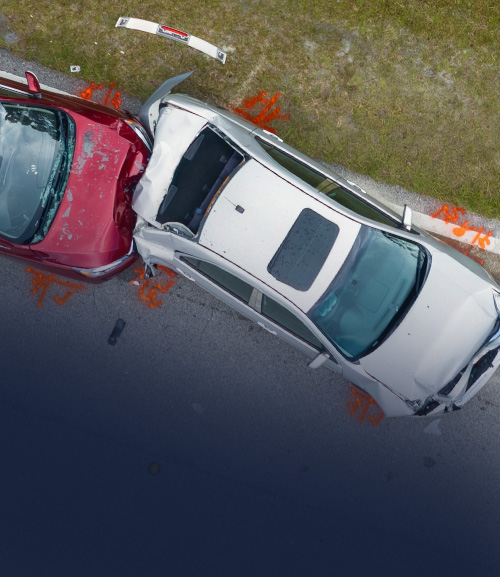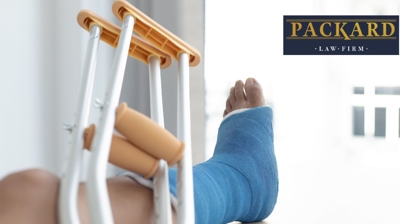
We Will Fight To Get You the
Compensation You Deserve

-
"I am in great hands with the Packard Law Firm."They have been a great assistance and always make me feel and know I am in great hands with the Packard Law Firm, very good, efficient, and effective, as well as informative. I feel I am in the best hands, thank you to all in the Packard Law Firm.- Alvin S.
-
"The outcome was what I had hoped for!"My case was a long process but the team at Packard Law Firm was there for me the entire time. I was able to easily reach someone with questions and additional information. Most interactions were very kind and professional.- Florence L.
-
"Those I am working with there treat me more as a family member."I am a client at Packard Law Firm. I say client, but I actually feel like those I am working with there treat me more as a family member. I work primarily with Bianca Zozaya, who is a Legal Assistant at the Firm.- Brian S.
-
"Tasks were handled with great efficiency."Kept me well informed and were always available to answer any questions. Their compassion and empathy demonstrated their understanding of the physical and emotional impact of serious injuries.- Nancy P.
San Antonio Personal Injury & Social Security Attorneys
Compassionate Personal Injury & Disability Law Firm Serving Bexar County
At The Packard Law Firm, we represent clients all across Texas who are disabled or who have been injured due to the negligence of another person or entity. Whether you were injured in a car, truck, motorcycle, or slip and fall accident, you are likely worried about how you will manage medical bills, lost income from missed work, and other financial consequences. Our skilled attorneys have generations of experience we can bring to your case and can help you get the compensation you are owed. We’ve already recovered hundreds of millions in settlements and verdicts for our clients.
We understand that being injured or filing for disability can be extremely overwhelming, which is why we work tirelessly to make the legal processes of getting you the resources you need as smooth and stress-free as possible. Our dedicated team can handle all of the paperwork and deal with the insurance companies and government agencies so that you can focus on what is most important – your recovery.
We operate on a contingency fee basis, so you won't have to worry about paying any legal fees upfront. You owe our firm nothing unless we help you recover compensation. If you or someone you love has been injured in an accident or needs help with a disability claim, don’t wait to get in touch with our San Antonio personal injury and Social Security lawyers.
Schedule a free consultation by calling (210) 972-8918 or contacting us online.

Why Choose Us?
Put Our Legacy of Service On Your Side
-
A Compassionate TeamWe work hard to make the process as smooth and stress-free as possible.
-
Capable RepresentationWe have the resources and the experience to take on even the most complex cases.
-
Fearless AdvocacyWe are not afraid to take on the big insurance companies or hold liable parties accountable.
-
A Personalized ApproachWe provide tailored legal services to meet the needs of each client.
-
A Record of Results
Our attorneys have successfully recovered millions of dollars for injured clients.
-
Generations of ExperienceOur firm has been representing injured individuals across Texas for generations.

Practice Areas
How May We Help You?
Whether you were injured in a car, truck, motorcycle, or slip and fall accident, we can help you get the compensation you need to get back on your feet.
-
Car AccidentsCar Accidents
-
Motorcycle AccidentsMotorcycle Accidents
-
Social Security DisabilitySocial Security Disability
-
Truck AccidentsTruck Accidents
-
Work InjuriesWork Injuries
-
Wrongful DeathWrongful Death
-
 Car Accidents
Car AccidentsIf you’ve been in a car accident, we can help get you the compensation you’re owed. We have experience with all types of accidents.
-
 Motorcycle Accidents
Motorcycle AccidentsMotorcycle riders may face severe injuries. Contact our team of motorcycle accident attorneys to seek compensation for your motorcycle injuries today.
-
 Social Security Disability
Social Security DisabilityMost people know that if they are injured or become ill, they may be entitled to collect much-needed benefits from Social Security.
-
 Truck Accidents
Truck AccidentsCommercial truck accidents can cause extensive injuries and property damage. Allow our truck accident attorneys to seek justice on your behalf.
-
 Work Injuries
Work InjuriesIf you were injured at work, you need guidance on how to get compensated for your medical expenses and lost income. Let us fight for the compensation you’re owed.
-
 Wrongful Death
Wrongful DeathIf you have lost a loved one due to the negligence of another person, you might be entitled to seek justice by filing a wrongful death claim.
Why Choose Our Personal Injury Attorneys?
When you are injured in an accident, you need an experienced and knowledgeable personal injury lawyer on your side. We understand the challenges that our clients face after being injured in a serious vehicular collision or premises liability accident, especially if they have suffered catastrophic burn injuries, brain injuries, or spinal cord injuries. That’s why we offer compassionate, solutions-oriented service to each and every one of our clients. We will take the time to get to know you and your case so that we can tailor our approach to bring you the best results possible. Our track record and client reviews speak for themselves.
Our firm’s team is not afraid to take on the big insurance companies or hold liable parties responsible for their actions. We have the resources, skills, and experience to take on even the most complex cases.
We are a family of attorneys dedicated to helping other families. Call (210) 972-8918 or contact us online to speak to a member of our team today!
How Complicated Can Personal Injury Claims Get?


Our Attorneys
A Family Of Attorneys Dedicated To Helping Your Family

Frequently Asked Questions
-
Do You Offer Free Consultations?
Yes, we are proud to offer free consultations to all prospective clients. This initial meeting allows us to discuss your needs and concerns in a relaxed, confidential setting with no obligation. Don’t hesitate to schedule your complimentary consultation if you have questions about your rights or think you may have a case.
-
Where Is Your Office Located?
Our law office is located just off the 410, at 1100 Northwest Loop 410 #100, San Antonio, TX 78213. If you cannot make it to our office, we are happy to schedule a virtual consultation.
-
What Should I Expect During My Initial Case Evaluation?
During your free case evaluation, a member of our team will review the details of your situation, whether that involves a potential personal injury claim, your eligibility for disability benefits, or an existing disability claim. We will ask questions and gather information so that we can provide accurate and personalized advice. By the end of the meeting, our team should be able to determine whether and how we can help. We will walk you through your applicable rights and legal options. If we are prepared to take your case, we can also review the relevant legal processes and help you understand what to expect.
-
Can You Help Me Figure Out If I Have a Personal Injury Claim or If I Qualify for Disability?
Absolutely. Determining whether you have a case for recovering compensation or qualify for disability can be complex, but our San Antonio personal injury and Social Security lawyers are here to help guide you through the applicable process. During your initial consultation, we will carefully evaluate the specifics of your situation, including the nature and extent of your injuries or disability. Our experienced professionals will assess various factors, such as the circumstances surrounding your injury or disability, potential negligence by other parties, and relevant legal criteria. By providing thorough insights and personalized guidance, we aim to help you understand your options and the likelihood of success for your claim. Our team will work collaboratively with you, offering honest and straightforward advice to help you make an informed decision on the best course of action.

























